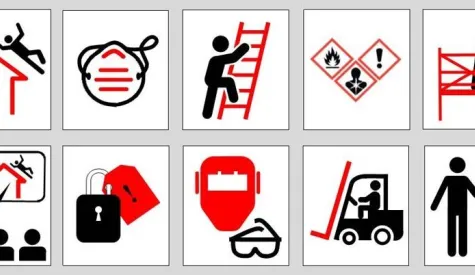What Does OSHA Say About Online Safety Training? - Part 1

Before deciding to invest in online safety training, management types often ask a similar question…
“Is this stuff OSHA certified?”
They’re wondering if online training is a legitimate, recognized method for training delivery, and asking if what they’re about to purchase will satisfy regulatory requirements.
So let’s unpack this common concern for many employers, shall we?
Here is the cold, hard fact, stated by OSHA as recently as 2015:
“While computer-based training (CBT) can augment the effectiveness of safety and health training for workers, it should not be the sole form of training that workers receive.”
Here, also, are some other facts…
- OSHA Compliance Safety and Health Officers support the use of safety training online and do recommend it to employers.
- OSHA heavily invests in and aggressively promotes the agency’s own “web-based”, online tools and resources intended for training.
- OSHA also authorizes online training providers for Construction and General Industry 10 & 30 hour instruction.
- OSHA recognizes that online training improves accountability, recordkeeping, workforce readiness, and worker engagement:
“…OSHA believes that computer-based training programs can be used as part of an effective safety and health training program to satisfy OSHA training requirements, provided that the program is supplemented by the opportunity for trainees to ask questions of a qualified trainer, and provides trainees with sufficient hands-on experience.”
Confused? We get it. Over the years, OSHA has repeatedly clarified its position on online training through a series of “letters of interpretation”, which are official responses to formal questions from employers. However, most of those letters are old and out of date, failing to keep pace with technology that has significantly improved in many cases.
Thankfully, OSHA publishes clear guidelines for training development advising employers on exactly what a quality online safety training program should look like…
OSHA Online Safety Training Guidelines
OSHA themselves have accepted several organizations’ online safety training programs as a part of their voluntary Outreach Training Program. The OSHA guidelines for inclusion in the program, while not regulations, include a variety of features that are important in developing online training.
The online safety training guidelines include:
- Testing and reporting test scores for each topic and a final test
- Removal of anyone scoring less than 70% after three tries on any program topic
- Mandatory page views of each content page
- Easy trainer availability built into the system
- Printable online materials for each topic
- The course must be interactive
- Tracking students’ time in the course
- Providing required reports and evaluations
HSI’s Online Safety Training courses check all of those boxes.
Essentially, OSHA wants to see each employer develop a well-rounded safety training program, not a one-size-fits-all, “set it and forget it” solution. And we agree—safety is too important. Think of a safety program as a responsive, living entity. Above the baseline policies and procedures, there must be a continuous loop of input and responsiveness, from awareness-level training to hazard recognition and abatement. Participation is essential. Each work environment is unique and that’s why live instruction is also critical; to capture the health and safety nuances of each workplace, a certain amount of hands-on, experiential safety training is necessary. One of the key benefits of training online is that it affords employers more time for one-on-one or small group live instruction, by handling the knowledge requirements for each training topic efficiently.
OSHA also advises that safety training programs should be designed around a needs assessment. Take our 10-minute, no-cost Training Needs Assessment to identify training topics for your workforce.


